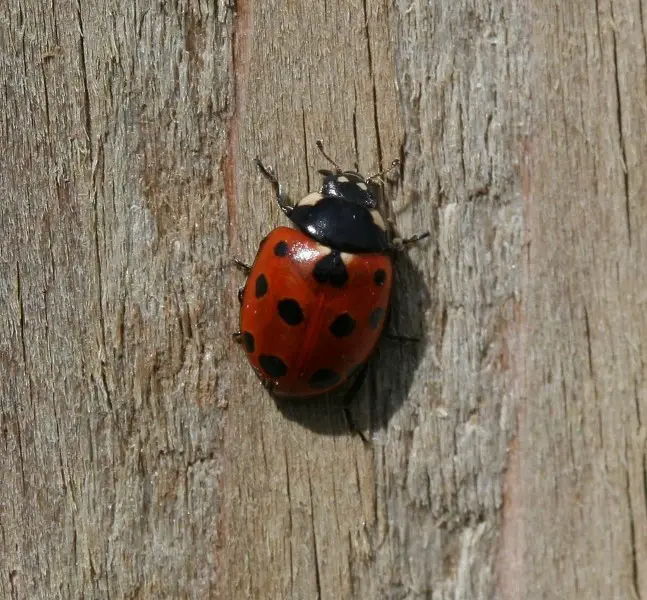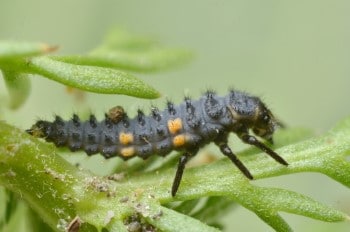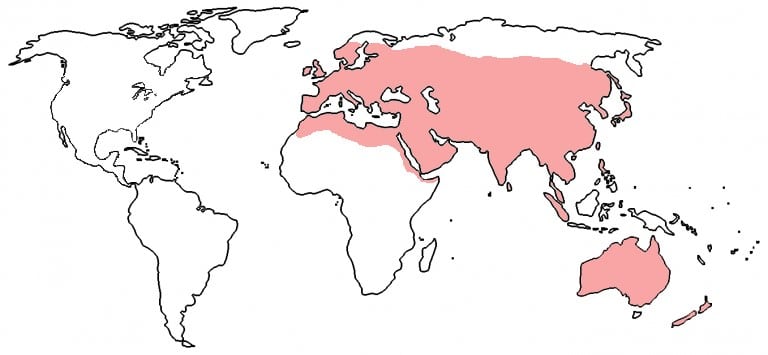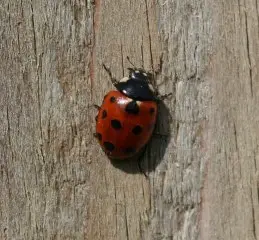Variations:

Taxonomy
Polyphaga > Cucujoidea > Coccinellidae > Henosepilachna > Coccinella undecimpunctata
General Information / Features:
- It is similar to the seven-spot ladybird except that its longer
- The elytra may be two different kinds, either red with black spots or black with red spots, both have 11 spots of the same pattern
- Maxillary palps are black in color
- Mainly it feeds on aphids although it is also known to explore different options such as some herbaceous plant parts
- Mostly found in coastal areas though it can stay in other places too.
- Biocontrol against aphids in soybean and okra
- Introduced as biocontrols to Australia and New Zealand
The Coccinella undecimpunctata is a classic ladybug shape and color, native to Europe, N.Africa, and Asia. Still quite common and referred to as eleven spot ladybird, but also known as Eleven Spotted Ladybird, Eleven Spotted Lady Beetle.
Physical Attributes
Average Length – 5-7mm.
Main body color – Red or Black
Pattern color – 11 black or Red spots
Pattern fusions – Very Rare
Other colors – no
Pronotum – Black, white markings
Leg color – Black
Other features – none.

Fourth-instar larva: Coccinella undecimpunctata Larva body is dark in color, with 2 distinct orange patches in the 3rd and 7th segments.
Dark-colored tubercles, it has numerous tall black spine-like branches. Black legs.
image source
Habitats
Given the food source for the Coccinella undecimpunctata, found in backyards, gardens, and around crops, However, sightings do include numerous other locations including fields, woodland, and shrubs.
Mostly native to Europe, North Africa, European Russia, Siberia, the Russian Far East, Ukraine, Moldova, Kazakhstan, Middle Asia, Western Asia, Afghanistan, Mongolia, China, Pakistan, North India
Author:
Linnaeus, 1758
Approx Size:
It measures 5-7mm in size
Food Source:
Mainly known to feed on aphids in all known areas, often associated with grasslands, wild fields, and meadows, wastelands, woods, and dry forest edges, alongside lakes and rivers.
Has a resistance to salt and can feed on Aphids in salty regions such as Dunes and coastal dunes, and meadows.
Location:

- Return To Identification List
- Request an Edit, or Update to this Information
- Submit an Image and location
- Related Article:
- Related Resource:
Information Compiled By Victoria Yange BSc in Natural Sciences and Pamela-Anne
All Content Copywrite Protected except where the source is specified – Link Only


